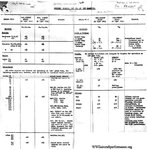Post #11
"they didnt have too
many good things to
say about their
practices. pilots got into
planes, as soon as the
engines were started
they were immediately
pushed to full throttle
and the plane airborne.
neither the pilots or
ground crews did any
pre-flight checks or
engine warm up. the
pilots took off in the
direction the plane was
facing at the time
regradless of the wind
direction ( cross wind,
down wind..didnt
matter) or placment of
other ac. there was no
co-ordination"
Replace plane or a/c with motorcycle and you'll have the answer.
Just humour, no big deal.
"they didnt have too
many good things to
say about their
practices. pilots got into
planes, as soon as the
engines were started
they were immediately
pushed to full throttle
and the plane airborne.
neither the pilots or
ground crews did any
pre-flight checks or
engine warm up. the
pilots took off in the
direction the plane was
facing at the time
regradless of the wind
direction ( cross wind,
down wind..didnt
matter) or placment of
other ac. there was no
co-ordination"
Replace plane or a/c with motorcycle and you'll have the answer.
Just humour, no big deal.
Last edited:


